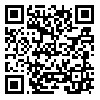Volume 13 -
IJMEHM 2020, 13 - : 64-74 |
Back to browse issues page
Download citation:
BibTeX | RIS | EndNote | Medlars | ProCite | Reference Manager | RefWorks
Send citation to:



BibTeX | RIS | EndNote | Medlars | ProCite | Reference Manager | RefWorks
Send citation to:
Tavakoli A. Transmission of Epidemic Diseases through the Persian Gulf In the Late Thirteenth and Early Fourteenth Century AH. IJMEHM 2020; 13 :64-74
URL: http://ijme.tums.ac.ir/article-1-6206-en.html
URL: http://ijme.tums.ac.ir/article-1-6206-en.html
Professor, Department of History, Faculty of Humanities and Social Sciences, Yazd University, Yazd, Iran
Abstract: (2462 Views)
In the late 13th and early 14th centuries, Iran was involved with epidemics such as plague and cholera, affecting the population and economy of the country. The spread of these diseases, on the one hand, was the result of the government's inability to organize health centers and, on the other hand, the inability to prevent these diseases by the quarantine of the borders. The southern borders of the country were one of the most important ways of transmitting diseases. Iran was exposed to these diseases through the Persian Gulf. It was possible that the diseases with origin in Iran transmitted from this waterway to the neighboring countries as well. These diseases were transmitted in two ways. The merchant ships’ entering Iran's ports from India was one way, especially the cities of Calcutta and Mumbai. The other was via the Hajj caravans (pilgrimage) rout. The opening of the Suez Canal and subsequently increase in voyage of steamships, lead to expansion of trade in the southern ports of the country, and frequent and more convenient transportation of the Hajjis (pilgrims). Thus, this also increased the spread of the diseases in that era.
Type of Study: Review |
Subject:
History of Medicine
Received: 2019/12/17 | Accepted: 2020/06/10 | Published: 2020/03/20
Received: 2019/12/17 | Accepted: 2020/06/10 | Published: 2020/03/20
| Rights and permissions | |
 |
This work is licensed under a Creative Commons Attribution-NonCommercial 4.0 International License. |





